|
Books Should Be Free Loyal Books Free Public Domain Audiobooks & eBook Downloads |
|
|
Books Should Be Free Loyal Books Free Public Domain Audiobooks & eBook Downloads |
|
History Books |
|---|
|
Book type:
Sort by:
View by:
|
By: Alfred de Musset (1810-1857) | |
|---|---|
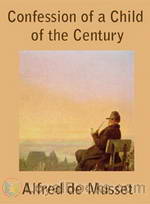 The Confession of a Child of the Century
The Confession of a Child of the Century
In this autobiographic novel, an aging man reflects on his past. We are witness to the relationships he has along the way, his mistakes, and finally- in the most unexpected and honorable way- the sudden developement of his belief in god. | |
By: Alfred Edward Taylor (1869-1945) | |
|---|---|
 Thomas Hobbes
Thomas Hobbes
This work is a look at the life and ideas of Thomas Hobbes, English philosopher of the seventeenth century. The most important ideas are found in his famous work Leviathan. Taylor looks at such concepts of Hobbes as the contract, naturalism, sovereignty, natural laws, church and state, absolutism, and political obligation, etc. | |
By: Alfred John Church (1829-1912) | |
|---|---|
 Henry the Fifth
Henry the Fifth
A brief history of the life Henry the Fifth. - Summary by KevinS | |
 Stories from Virgil
Stories from Virgil
Alfred J. Church created 26 stories from the original Greek version of Virgil's Aeneid. He included well-known ones, such as "The Horse of Wood" and "The Love and Death of Dido," as well as many others perhaps less well-known, such as "King Evander" and "The Funeral Games of Anchises." | |
By: Alfred William Benn (1843-1915) | |
|---|---|
 History of Modern Philosophy
History of Modern Philosophy
This book is a brief, but cogent discussion of Western philosophy-- from Francis Bacon and Giordano Bruno through Descartes, Spinoza, and Leibniz, Hume, Berkeley and Kant, the German idealists and Hegel, and ending with such nineteenth century luminaries as Mill, Spencer, and Nietzsche. Enchanted with Copernicus, Bruno goes to the stake for positing an infinity of inhabited worlds. Descartes, a professed skeptic, manages to justify everything the Jesuits taught him at La Flèche, while Spinoza, in mystical awe, envisions a pantheistic cosmos in which thought and extension are one and the same thing--God... | |
By: Alfredo d'Escragnolle Taunay (1843-1899) | |
|---|---|
 Innocencia: a story of the prairie regions of Brazil
Innocencia: a story of the prairie regions of Brazil
The story of Innocencia, an 18-year-old girl who lives in the prairies of Brazil, is a twist on the traditional love triangle. The plot has been compared to the more famous "Paul and Virginie" and "Romeo and Juliet", but it takes place on the dropback of the loneliness of the sparsely populated backregions in 19th century Brazil, visited by a German naturalist in search of new species of insects, Dr. Meyer, who unsuspectedly finds himself caught in a complicated maze of jealousy, love and distrust. Inocencia was the first book by a Brazilian writer to be translated into English, as the translator states in his preface. - Summary by Leni | |
By: Alice Morse Earle (1851-1911) | |
|---|---|
 Home Life in Colonial Days
Home Life in Colonial Days
CHAPTER I HOMES OF THE COLONISTS When the first settlers landed on American shores, the difficulties in finding or making shelter must have seemed ironical as well as almost unbearable. The colonists found a land magnificent with forest trees of every size and variety, but they had no sawmills, and few saws to cut boards; there was plenty of clay and ample limestone on every side, yet they could have no brick and no mortar; grand boulders of granite and rock were everywhere, yet there was not a single facility for cutting, drawing, or using stone... | |
 Child Life in Colonial Days
Child Life in Colonial Days
The accounts of oldtime child life gathered for this book are wholly unconscious and full of honesty and simplicity, not only from the attitude of the child, but from that of his parents, guardians, and friends. The records have been made from affectionate interest, not from scientific interest; no profound search has been made for motives or significance, but the proof they give of tenderness and affection in the family are beautiful to read and to know. | |
By: Alice Turner Curtis (1863-??) | |
|---|---|
 A Yankee Girl at Fort Sumter
A Yankee Girl at Fort Sumter
Sylvia Fulton is a ten-years-old girl from Boston who stayed in Charleston, South Carolina, before the opening of the civil war. She loves her new home, and her dear friends. However, political tensions are rising, and things start to change. Through these changes, Silvia gets to know the world better: from Estrella, her maid, she starts to understand what it is to be a slave, from her unjust teacher she learns that not all beautiful people are perfect, and from the messages she carries to Fort Sumter she learns what is the meaning of danger. However, this is a lovely book, written mostly for children. | |
 Little Maid of Province Town
Little Maid of Province Town
Plucky eight year old Anne Nelson, living in Provincetown on the tip of Cape Cod, is determined to bring the Revolutionary War to an end so that she can be reunited with her soldier father. Will she succeed in carrying an important message from Boston to Newburyport, warning the American troops to be prepared, or will she be caught by the English ships patrolling the harbor? | |
By: Allan Fea (1860-1956) | |
|---|---|
 Secret Chambers and Hiding Places
Secret Chambers and Hiding Places
“Secret Chambers and Hiding Places” is a collection of concealments and their uses, almost all within England, although a very few passages and chambers in continental Europe are mentioned, Jacobite hidey holes in Scotland, while the final chapter of the book covers Bonnie Prince Charlie’s wanderings around Scotland, among caves and other hiding places. Most chapters are devoted to historical events; such as the the seventeenth century persecution of roman catholics (with many large houses having specially constructed “priests’ holes”), or various unpopular monarchs and their hiding places... | |
By: Allen French (1870-1946) | |
|---|---|
 Story of Rolf and the Viking's Bow
Story of Rolf and the Viking's Bow
Rolf, a youth in early Christian Iceland, loses first his father, then his property, and finally his freedom to the schemes of a greedy neighbor. Outlawed from Iceland, Rolf travels abroad, meeting with shipwreck, enslavement, Viking berserkers, and many other dangers and adventures. All the while, Rolf searches for a way to prove his father was killed unjustly and win back his own property and freedom. Even more difficult, Rolf must end the cycle of enmity, vengeance, and pride that hangs like a curse over his family. - Summary by Erin Schellhase | |
By: Allen Glasser (1908-1971) | |
|---|---|
 Martian
Martian
The water was evaporated by the ever-shining sun until there was none left for the thirsty plants. Every year more workers died in misery. A stranger from another world comes and experiences the attempts by two different cultures with different languages to understand what the other wants. Not all educated cultures are cordial or sympathetic to new arrivals. This book explores one potential outcome of the meeting of alien races. - Summary by Paul Harvey | |
By: Allen Mawer (1879-1942) | |
|---|---|
 Vikings
Vikings
This is a concise history of the Vikings by Allen Mawer, MA, Professor of English Language and Literature in Armstrong College, University of Durham: late Fellow of Gonville and Caius College, Cambridge. It includes the following chapters: I.Causes of the Viking movement; II.The Viking movement down to the middle of the 9th century; III.The Vikings in England to the death of Harthacnut ; IV.The Vikings in the Frankish Empire to the founding of Normandy ;V. The Vikings in Ireland to the battle of Clontarf ; VI... | |
By: Alvar Núñez Cabeza de Vaca (ca. 1490/1507 - ca.1557/1579) | |
|---|---|
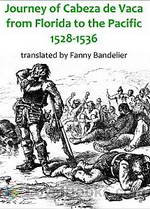 The Journey of Alvar Núñez Cabeza de Vaca
The Journey of Alvar Núñez Cabeza de Vaca
Few stories of shipwreck and survival can equal that of the 16th century Spaniard Alvar Núñez Cabeza de Vaca who, cast ashore near present day (USA) Tampa Bay, Florida, in 1528, survived eight years of hand-to-mouth existence among the Indians of the South and Southwest, and who walked on foot across the plains to the Pacific Coast, arriving in Mexico in 1536. In 1542 he published an account of his adventures, and the present reading is based on Fanny Bandelier’s English translation of that text... | |
By: Ambrose Bierce (1842-1913) | |
|---|---|
|
At the outset of the American Civil War, [the writer Ambrose] Bierce enlisted in the Union Army's 9th Indiana Infantry Regiment....In February 1862 he was commissioned First Lieutenant, and served on the staff of General William Babcock Hazen as a topographical engineer, making maps of likely battlefields. Bierce fought at the Battle of Shiloh (April 1862), a terrifying experience that became a source for several later short stories and the memoir, "What I Saw of Shiloh". In June 1864, he sustained a serious head wound at the Battle of Kennesaw Mountain, and spent the rest of the summer on furlough, returning to active duty in September. He was discharged from the army in January 1865. | |
By: Amelia B. Edwards (1831-1892) | |
|---|---|
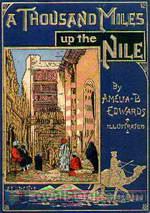 A Thousand Miles up the Nile
A Thousand Miles up the Nile
Known as the Godmother of Egyptology, Amelia Ann Blanford Edwards traveled through Egypt at a time when archeology was in its infancy in that country and literally anyone with a spade or trowel could go exploring through the magnificent, untouched ruins. She was one of a group of amazing Victorian women who ignored the repressive 19th century attitudes toward female scientists and defied society to follow their passion for history. A Thousand Miles up the Nile was first published in 1877. The title refers to the approximate distance from Alexandria to the Second Cataract of the Nile river, a journey that the author undertook over the course of a year in Egypt... | |
By: American and Foreign Anti-Slavery Society | |
|---|---|
 Two American Slavery Documents
Two American Slavery Documents
This recording contains two original documents. 1) Life of James Mars, a Slave Born and Sold in Connecticut, by James Mars . James Mars was born in Connecticut in 1790 and spent the better part of his youth a slave working for various owners—once fleeing to the woods with his family to avoid being relocated to the South. At age twenty-five he became a free man and moved to Hartford, Connecticut, where he became a leader in the local African American community. His memoir is one of the more famous accounts of slave life in early New England... | |
By: Amice MacDonell | |
|---|---|
 Enterprise of the ''Mayflower''
Enterprise of the ''Mayflower''
"Welcome to all! We show the story of how, nearly three hundred years ago, when this country was not so happy as it is now, some people driven by persecution out of England went on a long and dangerous voyage in a ship called the Mayflower, and made for themselves a home across the Atlantic Ocean." Cast List: Stage Directions read by MaryAnnMaster William Brewster: SpiderScientistMaster William Bradford: ToddHWMaster John Carver: aravagarwalMaster John Alden: JamesMcAndrewMaster John Robinson: Alex... | |
 Story of the Armada
Story of the Armada
It's the summer of 1588, and all is not well in England. Citizens are plotting to betray their queen for Spanish gold, and the dreaded Armada is coming closer and closer. It's up to Lord Burleigh and brave Sir Francis Drake to stop them, but will they succeed in convincing Queen Elizabeth that such action is necessary? And when the Spanish ships finally arrive, what will happen to the queen and the citizens of London? Cast List:William Cecil, Lord Burleigh: Tomas Peter Sir Walter Raleigh: Todd Sir Francis Drake: K... | |
 Saxon and Norman
Saxon and Norman
Edward the Confessor is very weak and will die soon. But with no son to succeed him, who will gain the throne? The common folk and loyal Saxon barons in England want Harold, while the Norman barons and the people in Normandy, France want Duke William. They claim Edward gave William the throne. Who is right? Will Britain be Normanized? - Summary by Esther ben Simonides Cast List King Edward the Confessor: Beth ThomasHarold, Earl of Wessex: Adele de PignerollesGyrth, brother to Harold; Cecilia, daughter... | |
 Robin Hood (Dramatic Reading)
Robin Hood (Dramatic Reading)
One May Day, Robin Hood and his Merry Men sit in Sherwood Forest, waiting for a traveller to share their dinner. Enter a distraught Knight with his fair daughter Marian, who owe money to the Sheriff of Nottingham, and have not the means by which to pay it. Meanwhile the greedy Sheriff is visited by the Baron of the Black Castle, who plots to silence the famous outlaw once and for all! This version of the Robin Hood legend was written, and now recorded, as a play, entertaining for children and adults alike... | |
By: Anatole France (1844-1924) | |
|---|---|
 Gods are Athirst
Gods are Athirst
The Gods Are Athirst (French: Les dieux ont soif, also translated as The Gods Are Thirsty or The Gods Will Have Blood) is a 1912 novel by Anatole France. The story follows the young Parisian painter Évariste Gamelin, who rises speedily from his humble beginnings to a member of the Revolutionary Tribunal in the second and third year of the French Revolution. In brilliant prose, Anatole France describes how Évariste's idealism turns into fanaticism, and he allows more and more heads to roll and blood to flow, placing himself and those he loves into ever greater danger. | |
By: Andre Norton (1912-2005) | |
|---|---|
 Rebel Spurs
Rebel Spurs
In 1866, only men uprooted by war had reason to ride into Tubacca, Arizona, a nondescript town as shattered and anonymous as the veterans drifting through it. So when Drew Rennie, newly discharged from Forrest’s Confederate scouts, arrived leading everything he owned behind him—his thoroughbred stud Shiloh, a mare about to foal, and a mule—he knew his business would not be questioned. To anyone in Tubacca there could be only one extraordinary thing about Drew, and that he could not reveal: his name, Rennie... | |
 Ride Proud, Rebel!
Ride Proud, Rebel!
Drew Rennie, served as a cavalry scout in Confederate general John Hunt Morgan's command. He had left home in 1862 after a final break with his harsh grandfather, who despised him since his birth because of his mother's runaway marriage to a Texan. During the final year of conflict Drew has the additional responsibility of looking out for his headstrong fifteen-year-old cousin Boyd, who has run away from home to join Morgan's command and has a lot to learn in the school of hard knocks the army provides. The story follows the two of them and a new friend, Anson Kirby, through campaigns in Kentucky, Tennessee and later on deeper into the South, first with Morgan and later under Forrest. | |
By: Andrew Carnegie (1835-1919) | |
|---|---|
 Autobiography of Andrew Carnegie
Autobiography of Andrew Carnegie
This autobiography of Andrew Carnegie is a very well written and interesting history of one of the most wealthy men in the United states. He was born in Scotland in 1835 and emigrated to America in 1848. Among his many accomplishments and philanthropic works, he was an author, having written, besides this autobiography, Triumphant Democracy (1886; rev. ed. 1893), The Gospel of Wealth, a collection of essays (1900), The Empire of Business (1902), and Problems of To-day (1908)]. Although this autobiography was written in 1919, it was published posthumously in 1920. | |
 Triumphant Democracy
Triumphant Democracy
Subtitled "Fifty Years' March of the Republic," this is steel tycoon Andrew Carnegie's love letter to America, first published in 1886, an impassioned celebration of the American success story, and a call for other nations to follow in America's footsteps. Through simple, direct discussions of the nature of the American character and her jobs and education, religion, industry, art and literature, foreign affairs, and more, Carnegie sets out a case for a brand of conservative democracy for the world to emulate... | |
By: Andrew Jackson | |
|---|---|
 Robert O'Hara Burke
Robert O'Hara Burke
A non-fictional account of Burke and Wills’s 1860 expedition to cross the Australian continent from south to north and then return. Containing many excerpts from the diaries and accounts of the explorers, this book was published the year after the expedition met its disastrous end.(description written by trioptimum) | |
By: Andrew Lang | |
|---|---|
 A Short History of Scotland
A Short History of Scotland
A Short History of Scotland is a consise introduction to the history of Scotland from Roman times to the last Jacobite rebellion, written by the author of a much longer Scottish history. | |
 Custom and Myth
Custom and Myth
CUSTOM AND MYTHINTRODUCTION.Though some of the essays in this volume have appeared in various serials, the majority of them were written expressly for their present purpose, and they are now arranged in a designed order. During some years of study of Greek, Indian, and savage mythologies, I have become more and more impressed with a sense of the inadequacy of the prevalent method of comparative mythology. That method is based on the belief that myths are the result of a disease of language, as the pearl is the result of a disease of the oyster... | |
By: Anges Strickland, Elisabeth Strickland (1796-1874) | |
|---|---|
 The Lives of the Queens of England
The Lives of the Queens of England
The Lives of the Queens of England is a multi-volumed work attributed to Agnes Strickland, though it was mostly researched and written by her sister Elizabeth. These volumes give biographies of the queens of England from the Norman Conquest in 1066. Although by today's standards, it is not seen as a very scholarly work, the Stricklands used many sources that had not been used before.Volume one includes the biographies of Matilda of Flanders, Matilda of Scotland, Adelicia of Louvaine, Matilda of Boulogne and Eleanora of Aquitaine.(Introduction by Ann Boulais) | |
By: Anne MacLanahan Grenfell (1885-1938) | |
|---|---|
 Le Petit Nord
Le Petit Nord
A collection of letters from Anne (MacLanahan) Grenfell, future wife of Sir Wilfred Grenfell, regarding her year of missionary service at the orphanage in St. Anthony, Newfoundland and Labrador, Canada. | |
By: Annie Denton Cridge (1825-1875) | |
|---|---|
 Man's Rights; or, How Would You Like It?: Comprising Dreams
Man's Rights; or, How Would You Like It?: Comprising Dreams
"Man's Rights; or, How Would You Like It?: Comprising Dreams" is the first known feminist utopian novel written by a woman. The text features nine dreams experienced by a first-person female narrator. In the first seven dreams, she visits the planet Mars, finding a society where traditional sex roles and stereotypes are reversed. The narrator witnesses the oppression of the men on Mars and their struggle for equality. In the last two dreams, the narrator visits a future United States ruled by a woman president. | |
By: Annie F. Johnston (1863-1931) | |
|---|---|
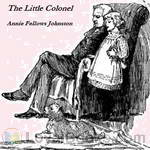 The Little Colonel
The Little Colonel
The scene of this story is laid in Kentucky. Its heroine is a small girl, who is known as the Little Colonel, on account of her fancied resemblance to an old-school Southern gentleman, whose fine estate and old family are famous in the region. (Introduction taken from original book.) | |
 Joel, a Boy of Galilee
Joel, a Boy of Galilee
Joel, a crippled boy, cannot play with the children and has nothing to care about. Rabbi Phineas helps him to find something he can do and tells him the reason that he is so kind is because of a boy from his hometown of Nazareth. Soon stories are going about everywhere of miracles, and some people think that the Messiah has come. Then someone tells Joel he should ask for his back to be healed. Will Joel be able to find the miracle worker? | |
By: Annie L. Burton (c. 1858-) | |
|---|---|
 Memories of Childhood's Slavery Days
Memories of Childhood's Slavery Days
This is a short and simple, yet poignant autobiography of Annie Burton, who recounts her early carefree childhood as a slave on a southern plantation while the Civil War raged around her, and after the Emancipation Proclamation, how her life changed as she struggled to maintain herself and family, manage her finances, and develop as a free person of color. The last half of the narrative relies heavily upon speeches, poems, and hymns written by others that stirred Annie's religious passions and increased her pride in her heritage, including a very powerful speech by Dr... | |
By: Annonymous | |
|---|---|
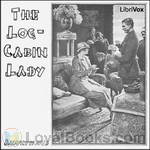 The Log-Cabin Lady
The Log-Cabin Lady
'The story of The Log-Cabin Lady is one of the annals of America. It is a moving record of the conquest of self-consciousness and fear through mastery of manners and customs. It has been written by one who has not sacrificed the strength and honesty of her pioneer girlhood, but who added to these qualities that graciousness and charm which have given her distinction on two continents.'(from the introduction) | |
By: Anonymous | |
|---|---|
 True Stories of Wonderful Deeds
True Stories of Wonderful Deeds
37 short pieces perfect for newer recorders. These one page Stories of (mostly) Wonderful Deeds were written for Little Folk to teach them about famous incidents in their history. Bonnie Prince Charlie, Nelson and Hardy, Bruce and the Spider, David Livingston, Canute, Sir Philip Sydney, and Elizabeth and Raleigh are just some of the well known people and incidents covered in short stories. | |
 Doctrina Christiana
Doctrina Christiana
DOCTRINA CHRISTIANAThe first book printed in the Philippines has been the object of a hunt which has extended from Manila to Berlin, and from Italy to Chile, for four hundred and fifty years. The patient research of scholars, the scraps of evidence found in books and archives, the amazingly accurate hypotheses of bibliographers who have sifted the material so painstakingly gathered together, combine to make its history a bookish detective story par excellence. It is easy when a prisoner has been... | |
 Santa Claus, Kriss Kringle or St. NIcholas
Santa Claus, Kriss Kringle or St. NIcholas
volunteers bring you 14 recordings of Santa Claus, Kriss Kringle or St. NIcholas by Anomymous. This was the Fortnightly Poetry project for December 16, 2018. ------ This poem was published in booklet form with illustrations in 1897. - Summary by David Lawrence | |
 St. Clair's Defeat 1791
St. Clair's Defeat 1791
St. Clair's defeat was a battle fought between the United States and the Western Confederacy of Native Americans on November 4, 1791, during the Northwest Indian War. Out of a US force of roughly 1000 men and officers, only 24 escaped unharmed. It has been cited as the most decisive defeat in the history of the American military and its largest defeat ever by Native Americans. This pamphlet is a compilation of three articles published in 1847, 1851 and 1864. | |
 Shri Dnyaneshwar - A Sketch Of His Life And Teachings
Shri Dnyaneshwar - A Sketch Of His Life And Teachings
An overview of the life of Shri Dnyaneshwar and his devoted family. Dnyaneshwar was a 13th-century Indian poet and yogin. He commentated the Bhagavad Gita in a timeless manner while in his teens, and wrote an original book of verse. He was an inspirational speaker with many followers. - Summary by Czandra | |
By: Anonymous, attributed to Kathleen Luard (c.1872) | |
|---|---|
 Diary of a Nursing Sister on the Western Front 1914-1915
Diary of a Nursing Sister on the Western Front 1914-1915
The title is, I think, self explanatory. The nurse in question went out to France at the beginning of the war and remained there until May 1915 after the second battle of Ypres when she went back to a Base Hospital and the diary ceases. Although written in diary form, it is clearly taken from letters home and gives a vivid if sometimes distressing picture of the state of the casualties occasioned during that period. After a time at the General Hospital in Le Havre she became one of the three or four sisters working on the ambulance trains which fetched the wounded from the Clearing Hospitals close to the front line and took them back to the General Hospitals in Boulogne, Rouen and Le Havre. | |
By: Anthony Trollope (1815-1882) | |
|---|---|
 The Life of Cicero
The Life of Cicero
Marcus Tullius Cicero (106-43BC) was an orator, statesman, philosopher and prolific correspondent, who rose as a ‘new man’ in Rome in the turbulent last years of its republican government. Anthony Trollope, best known as a novelist, admired Cicero greatly and wrote this biography late in life in order to argue his virtues against authors who had granted him literary greatness but questioned his strength as a politician and as a man. He takes a personal approach, affording us an insight into his own mind and times as well as those of his subject... | |
 Clergymen Of The Church Of England
Clergymen Of The Church Of England
This 1866 book was published in a time of great change in the Church of England. Trollope began as a High Church adherent and then worked his way to a Broad Church stance, a theological liberalism . This book deals with a crisis of faith and a crisis of structural form in the Victorian Church of England. It possesses all the interesting attributes of the novelist’s style. Note on the final chapter: John William Colenso was a British mathematician, theologian, Biblical scholar and social activist, who was the first Church of England Bishop of Natal. His progressive views on biblical criticism and treatment of African natives were controversial. - Summary by David Wales | |
By: Anthony Weldon (1583-1648) | |
|---|---|
 Court and Character of King James whereunto Is Now Added the Court of King Charles: Continued unto the Beginning of These Unhappy Times: with Some Observations upon Him Instead of a Character
Court and Character of King James whereunto Is Now Added the Court of King Charles: Continued unto the Beginning of These Unhappy Times: with Some Observations upon Him Instead of a Character
Gossipy exposés of shenanigans at the heart of government are nothing new. The author, Sir Anthony Weldon , was a courtier of years of experience and standing; his account of court intrigues around the Stuart Kings James I and Charles I was written seemingly in the tense period leading up to the English Civil War in the 1640s, and for a private readership . This text, known as the source for the summing up of James I as "the wisest fool in Christendom", gives us an insider's partisan, at times... | |
By: Archibald Forbes (1838-1900) | |
|---|---|
 The Afghan Wars 1839-42 and 1878-80, Part 1
The Afghan Wars 1839-42 and 1878-80, Part 1
The First Anglo–Afghan War was fought between British India and Afghanistan from 1839 to 1842. It was one of the first major conflicts during the Great Game, the 19th century competition for power and influence in Central Asia between the United Kingdom and Russia, and also marked one of the worst setbacks inflicted on British power in the region after the consolidation of British Raj by the East India Company. | |
By: Archibald Gracie (1858-1912) | |
|---|---|
 Truth about the Titanic
Truth about the Titanic
Colonel Archibald Gracie was the first survivor of the sinking of the Titanic to die, and this first-hand account was published posthumously. He attempts to dispel some of the rumors surrounding the tragic event and gives his personal observations and an account of his survival clinging to the hull of an overturned collapsible lifeboat after helping many others to escape safely. A large portion of the book is given to personal accounts of other survivors from both the American and British boards of inquiry, boat by boat. - Summary by Larry Wilson | |
By: Archibald Grimké (1849-1930) | |
|---|---|
 William Lloyd Garrison, the Abolitionist
William Lloyd Garrison, the Abolitionist
"THE author of this volume desires . . . to say . . . that it is his earnest hope that this record of a hero may be an aid to brave and true living in the Republic, so that the problems knocking at its door for solution may find the heads, the hands, and the hearts equal to the performance of the duties imposed by them upon the men and women of this generation. William Lloyd Garrison was brave and true. Bravery and truth were the secret of his marvelous career and achievements. May his countrymen and countrywomen imitate his example and be brave and true, not alone in emergent moments, but in everyday things as well." | |
By: Archibald MacMechan (1862-1933) | |
|---|---|
 Chronicles of Canada Volume 27 - The Winning of Popular Government: A Chronicle of the Union of 1841
Chronicles of Canada Volume 27 - The Winning of Popular Government: A Chronicle of the Union of 1841
In the 1830's, Canada was a ideologically divided country. Political upheaval and even riots occurred over Canada's future. Would it remain a subsidiary of England? Would it form its own republic, or even merge with the United States? This work tells of how some of Canada's founding fathers crossed the bridge between past and future. | |
By: Aristophanes (446BC - 385BC) | |
|---|---|
 Lysistrata
Lysistrata
Lysistrata read by the Classics Drama Company at DePaul. The Classics Drama Company at DePaul is a new gathering of Thespians and Classicists dedicated to performing and understanding ancient literature. If you live in Chicago and attend DePaul University, we welcome new additions to our group. Contact Dr. Kirk Shellko (kshellko@depaul.edu), if interested.First performed in classical Athens c. 411 B.C.E., Aristophanes’ Lysistrata is the original battle of the sexes. One woman, Lysistrata, brings together the women of all Greece, exhorting them to withhold sexual contact from all men in order that they negotiate a treaty... | |
By: Arthur Graeme West (1891-1917) | |
|---|---|
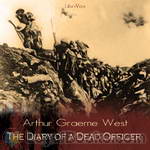 The Diary of a Dead Officer
The Diary of a Dead Officer
Published posthumously in 1919, this collection of diary entries presents a scathing picture of army life and is said to be one of the most vivid accounts of daily life in the trenches. It chronicles West's increasing disillusion with war and his move toward pacifist and atheist beliefs. The final part consists of his powerful war poems, including God, How I Hate You, You Young Cheerful Men, and Night Patrol. West was killed by a sniper in 1917. In view of some of his poems, one wonders if death was not unwelcome. (Introduction adapted from Wikipedia by Ruth Golding) | |
By: Arthur Hassall (1853-1930) | |
|---|---|
 Making of the British Empire (A.D. 1714-1832)
Making of the British Empire (A.D. 1714-1832)
At its height, the British Empire was the largest in history. This short volume traces its development through the long 18th century, from 1714 to the end of the Napoleonic Wars. Founded on the prosperity of Sir Robert Walpole's ministry , the Empire emerged from the Indian conquests of that gifted military amateur, Lord Clive, and was extended under the leadership of William Pitt, Earl of Chatham, who drove the English to victory in the Seven Years' War . Surmounting the loss of the American colonies and twenty years of conflict with France, by the first quarter of the 19th century, the British navy, master of the oceans, presided over an Empire upon which the sun never set. | |
By: Arthur Henry Johnson (1845-1927) | |
|---|---|
 Normans in Europe
Normans in Europe
This short history of the Normans in Europe opens with the invasions of the Vikings, who came from Scandinavian villages among rugged rocks and deep fiords. Johnson recounts how their myths of strife and woe, of the frost giants and of the crafty Loki, expressed their twin ideals of resourcefulness and war. These restless bands ravaged England, Germany, and France, penetrating the continents in their shallow-draft, half-decked ships. He writes that wherever they went they showed "themselves great warriors, founders, organizers, and administrators... | |
By: Arthur Poyser | |
|---|---|
 Tower Of London
Tower Of London
Description. History. “… those who read this book and have no opportunity of visiting the Tower expect that the characters in the moving drama of its history shall have some semblance of life as they walk across the stage…. My wish has been to persuade those who come to visit the Tower that there is a great deal to be seen in its immediate vicinity… A noble and historic building like the Tower resembles a venerable tree whose roots have spread into the soil in all directions, during the uncounted years of its existence, far beyond the position of its stem.” - Summary by Book Preface and David Wales | |
By: Arthur Ransome (1884-1967) | |
|---|---|
 Russia in 1919
Russia in 1919
PUBLISHER'S NOTE: On August 27, 1914, in London, I made this note in a memorandum book: "Met Arthur Ransome at_____'s; discussed a book on the Russian's relation to the war in the light of psychological background--folklore." The book was not written but the idea that instinctively came to him pervades his every utterance on things Russian. The versatile man who commands more than respect as the biographer of Poe and Wilde; as the (translator of and commentator on Remy de Gourmont; as a folklorist, has shown himself to be consecrated to the truth... | |
By: Arthur Schopenhauer (1788-1860) | |
|---|---|
 Basis Of Morality
Basis Of Morality
In 1837, the Danish Royal Society of Sciences offered a prize to any essayist who could satisfactorily answer the question, "Is the fountain and basis of Morals to be sought for in an idea of morality which lies directly in the consciousness , and in the analysis of the other leading ethical conceptions which arise from it? Or is it to be found in some other source of knowledge?" The Basis of Morality is the essay submitted in 1840 by German philosopher Arthur Schopenhauer. In it, he first mercilessly... | |
By: Arthur William Knapp (1880-1939) | |
|---|---|
 Cocoa and Chocolate: Their History from Plantation to Consumer
Cocoa and Chocolate: Their History from Plantation to Consumer
As that heavenly bit of chocolate melts in our mouths, we give little thought as to where it came from, the arduous work that went in to its creation, and the complex process of its maturation from a bean to the delicacy we all enjoy. This “little book” details everything you have ever wanted to know (and some things you never knew you wanted to know) about cocoa and chocolate from how the trees are planted and sustained to which countries produce the most cacao beans. Do cacao beans from various... | |
By: Arthur Young (1741-1820) | |
|---|---|
 Travels in France During the Years 1787, 1788, 1789
Travels in France During the Years 1787, 1788, 1789
Arthur Young, an English agriculturist, set out to write a travelogue on the state of agriculture in France and found himself in the midst of the French Revolution. His report on life in the capital and in the countryside in the years 1787, 1788, and 1789, replete with droll traveler's mishaps, becomes an eyewitness account of a society on the brink of catastrophe. From the court scene at Versailles to backroads villages comes this astonishing record of unfolding events, conspiracy theories about the queen, jubilation, and mass hysteria. | |
By: Asser, Bishop of Sherborne | |
|---|---|
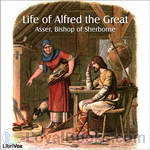 Life of Alfred the Great
Life of Alfred the Great
A life of King Alfred of England originally composed in Latin, possibly sometime around 888 A.D. by the Monk and Bishop Asser, although some scholars contend that the work was actually composed much later by an unknown hand. | |
By: Auguste Comte (1798-1857) | |
|---|---|
 General View of Positivism
General View of Positivism
Auguste Comte was from France and published this book in French in 1844. He made a very great impact on the sciences and claims to have “discovered the principal laws of Sociology." Comte says Reason has become habituated to revolt but that doesn’t mean it will always retain its revolutionary character. He discusses Science, the trade-unions, Proletariat workers, Communists, Capitalists, Republicans, the role of woman in society, the elevation of Social Feeling over Self-love, and the Catholic Church in this book... | |
By: Austin Bishop | |
|---|---|
 Tom of the Raiders
Tom of the Raiders
Young Adult historical fiction of a young man joining the Union Army and taking part in the Great Locomotive Chase. | |
By: Austin Craig | |
|---|---|
 Lineage, Life and Labors of Jose Rizal
Lineage, Life and Labors of Jose Rizal
LINEAGE LIFE AND LABORS of JOSE RIZAL PHILIPPINE PATRIOTBY AUSTIN CRAIGINTRODUCTION In writing a biography, the author, if he be discriminating, selects, with great care, the salient features of the life story of the one whom he deems worthy of being portrayed as a person possessed of preeminent qualities that make for a character and greatness. Indeed to write biography at all, one should have that nice sense of proportion that makes him instinctively seize upon only those points that do advance his theme... | |
By: B. G. Jefferis and J. L. Nichols | |
|---|---|
 Searchlights on Health
Searchlights on Health
SEARCHLIGHTS ON HEALTH. THE SCIENCE OF EUGENICSBy PROF. B.G. JEFFERIS, M.D., PH. D. KNOWLEDGE IS SAFETY. 1. The old maxim, that Knowledge is power, is a true one, but there is still a greater truth: KNOWLEDGE IS SAFETY. Safety amid physical ills that beset mankind, and safety amid the moral pitfalls that surround so many young people, is the great crying demand of the age. 2. CRITICISM.--This work, though plain and to some extent startling, is chaste, practical and to the point, and will be a boon and a blessing to thousands who consult its pages... | |
By: B. H. Roberts (1857-1933) | |
|---|---|
 Mormon Battalion, Its History and Achievements
Mormon Battalion, Its History and Achievements
A history of the Longest March of Military in History. The Mormon Battalion was the only religious unit in United States military history in federal service, recruited solely from one religious body and having a religious title as the unit designation. In 1847, as the Mormons were in Iowa heading West, after being driven out of their homes in Nauvoo, Illinois, the U.S. Army requested 500 volunteers to assist in the Mexican-American War effort. From July 1847 to July 1848 the battalion made a grueling march of nearly 2,100 miles from Council Bluffs, Iowa, to San Diego, California... | |
By: Baroness Emmuska Orczy (1865-1947) | |
|---|---|
 El Dorado
El Dorado
If you've read and loved the exciting classic The Scarlet Pimpernel then you'd probably be delighted to follow the further adventures of the dashing Sir Percy Blakeney. El Dorado by Baronness “Emmuska” Orczy depicts the intrepid swordsman and escape artist in the role of savior of the French royal family. Published in 1913, El Dorado was the fourth in the Pimpernel series of eleven books, numerous short stories and other related writings about her famous British adventurer. However, Orczy did not always follow a strict chronological sequence while publishing the novels and hence, there is plenty of overlap between the time frames of the stories... | |
 The Elusive Pimpernel
The Elusive Pimpernel
First Published in 1908, The Elusive Pimpernel by Baroness Orczy is the 4th book in the classic adventure series about the Scarlet Pimpernel. | |
By: Bartolomé de las Casas (1484-1566) | |
|---|---|
 Brief Account of the Destruction of the Indies
Brief Account of the Destruction of the Indies
A Short Account of the Destruction of the Indies (Spanish: Brevísima relación de la destrucción de las Indias) is an account written by the Spanish Dominican friar Bartolomé de las Casas in 1542 (published in 1552) about the mistreatment of the indigenous peoples of the Americas in colonial times and sent to then Prince Philip II of Spain. One of the stated purposes for writing the account is his fear of Spain coming under divine punishment and his concern for the souls of the Native Peoples... | |
By: Basil Joseph Mathews (1879-1951) | |
|---|---|
 Paul the Dauntless
Paul the Dauntless
“We shall in this book try to go in the footsteps of Paul. It will not be all easy traveling for any of us, to journey with this daring explorer of the Unseen; there is some steep hill-climbing, some scrambling over boulders, long flat tramps over the plain, and dangerous sea-journeys for anyone who will attempt really to follow the life of this man whose eager brain was ever ‘Voyaging on strange seas of thought/Alone!’ But, if you will … trudge by him till you really know him, you will have found for yourself one of the great companions of the world.” (From the Introduction) | |
By: Beatrice A. Lees (1858-1940) | |
|---|---|
 Central Period of the Middle Age 918-1273
Central Period of the Middle Age 918-1273
Beatrice Lees writes that the history of the period of the Middle Ages from 918 to 1273 is that of "a heroic period, the age of feudalism and monasticism, of chivalry and the Crusades." The era opened "with gloomy prospects for Western Christendom. On every side danger threatened" from the Vikings, the Saracens, and the Magyars. But better things lie in store in this little volume as the Capetian dynasty is founded in France, the Holy Roman Empire becomes the political center of Europe under Frederick Barbarossa, the Papacy attains its greatest influence under Innocent III, and Frederick II, called "stupor mundi," the wonder of the world, rules the cosmopolitan Kingdom of the Two Sicilies... | |
By: Benjamin Franklin (1706-1790) | |
|---|---|
 The Autobiography of Benjamin Franklin
The Autobiography of Benjamin Franklin
Inventor, author, printer, scientist, politician, diplomat—all these terms do not even begin to fully describe the amazing and multitalented, Benjamin Franklin who was of course also one of the Founding Fathers of America. At the age of 75, in 1771 he began work on what he called his Memoirs. He was still working on it when he died in 1790 and it was published posthumously, entitled An Autobiography of Benjamin Franklin. The book had a complicated and controversial publication history. Strangely enough, the first volume only was first published in French, in Paris in 1791... | |
By: Benjamin Harris (1781-1858) | |
|---|---|
 The Recollections of Rifleman Harris
The Recollections of Rifleman Harris
The recollections of a British infantryman who served in the British army during the Napoleonic Wars. | |
By: Benvenuto Cellini ((1500-1571)) | |
|---|---|
 The Autobiography of Benvenuto Cellini
The Autobiography of Benvenuto Cellini
Cellini’s autobiographical memoirs, which he began writing in Florence in 1558, give a detailed account of his singular career, as well as his loves, hatreds, passions, and delights, written in an energetic, direct, and racy style. They show a great self-regard and self-assertion, sometimes running into extravagances which are impossible to credit. He even writes in a complacent way of how he contemplated his murders before carrying them out. He writes of his time in Paris: Parts of his tale recount... | |
By: Bernard Le Bovier de Fontenelle (1657-1757) | |
|---|---|
 Conversations on the Plurality of Worlds
Conversations on the Plurality of Worlds
This book is a popular science book written in the late 1600s. It is written as a series of conversations between a gallant philosopher and a countess, while walking in her garden and gazing at the stars. The philosopher explains the heliocentric model of the solar system and also muses on the possibility of extraterrestrial life. While it explains the heliocentric model, unlike other astronomy works of the time, it did not attract the attention of the Church. | |
By: Bertrand Russell | |
|---|---|
 Proposed Roads to Freedom
Proposed Roads to Freedom
Bertrand Russell, 3rd Earl Russell (1872 – 1970) was a British philosopher, logician, mathematician, political activist and Nobel laureate. He led the British “revolt against idealism” in the early 1900s and is considered one of the founders of analytic philosophy along with his predecessor Gottlob Frege and his protégé Ludwig Wittgenstein. In this book, written in 1918, he offers his assessment of three competing streams in the thought of the political left: Marxian socialism, anarchism and syndicalism. | |
 Mysticism and Logic and Other Essays
Mysticism and Logic and Other Essays
This anthology collects a number of fascinating strands of Bertrand Russell's thought. "Mathematics and the Metaphysicians" details the impact of the 1900 World Congress of Philosophers on Russell's development and the hope that new methods in mathematics could be applied to the solution of ancient philosophical problems. Many of the subsequent essays show the evolution of this hope as Russell worked on the foundations of mathematics and applied the new methods to the reconstruction of physical objects on the basis of sense-data, and the redefinition of matter and cause. | |
 Problems of Philosophy (version 2)
Problems of Philosophy (version 2)
This 1912 book remains among the most widely-used and well-written introductions to philosophy in English. It was aimed to be an accessible introduction to philosophy for the average shopkeeper in England in 1912. Despite its accessibility It has engaged scholarly philosophical commentators on a range of issues raised in the work. Above all it conveys in easy and witty manner the philosophical frame of mind to those that have never encountered it before. It was almost immediately, and remains today, a classic. This recording is dedicated to Jill Evans, Esq. | |
 On Propositions: What They Are and How They Mean
On Propositions: What They Are and How They Mean
In this piece, Bertrand Russell offers an account of propositions. This essay has been widely regarded as a turning point in Russell's thought: fresh from his prison sentence, during which he read numerous works of psychology, he now rejects the existence of the unitary, lasting metaphysical subject and the act-object analysis of sensation. He here embraces the view advocated by American philosophers like William James, namely, neutral monism. This far-ranging essay includes a lengthy discussion of behaviorism and of the structure of facts, complete with an endorsement of negative facts and criticisms of attempts to avoid them. - Summary by Landon D. C. Elkind | |
 Practice and Theory of Bolshevism
Practice and Theory of Bolshevism
This book records Bertrand Russell's impressions of the new regime after a 1920 visit to Russia following the 1917 Bolshevik Revolution, including his meetings with Lenin, Trostky, and Gorky. It includes a chapter that was authored by Dora Black, educational theorist and feminist author, and Russell's spouse. This chapter was unfortunately removed in the second edition, which was issued after Dora and Bertrand divorced. This recording is dedicated to my darling wife, Jill. Happy Hanukkah and Happy 2020! - Summary by Landon D. C. Elkind | |
 Philosophical Essays
Philosophical Essays
Six out of seven essays appearing here were reprinted from other publications; indeed, this 1910 collection went out of print, so that two of the essays occurring here were reprinted in Russell's 1917 "Mysticism and Logic, and Other Essays". Nonetheless, this essay records Russell's thinking at a critical juncture, just before the publication of Volume I of the co-authored "Principia Mathematica" and just after the passing of the American pragmatist, William James. These essays record Russell's reactions... | |
By: Bill Nye | |
|---|---|
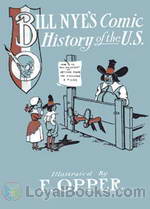 Comic History of the United States
Comic History of the United States
For American journalist and humorist Edgar Wilson Nye who wrote under the pen name Bill Nye in the late 19th century, facts are not to be presented in their newborn, bare state. They should be properly draped and embellished before they can be presented before the public. Hence, in the Comic History of the United States published in 1894, he gives his readers the facts. But in a bid to make the historical figures more human he describes them as “people who ate and possibly drank, people who were born, flourished and died, not grave tragedians posing perpetually for their photographs... | |
 Comic History of England
Comic History of England
If you thought history was dull, dry and boring, you haven't read Bill Nye's books! He brings wit, humor, satire, irony and sheer nonsensical fun into the subject, making it both entertaining and memorable. The Comic History of England was published posthumously in 1896 after the writer's tragic and untimely death half-way through the project. Hence it remains incomplete and covers the history of the island nation only up to the Tudor period. However, beginning with Julius Caesar, the Roman invasion of Britain, the Druids and Stonehenge, this book is still a rib-tickling ride through the centuries... | |
By: Booker T. Washington (1856-1915) | |
|---|---|
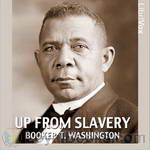 Up From Slavery
Up From Slavery
Up From Slavery is the 1901 autobiography of Booker T. Washington detailing his slow and steady rise from a slave child during the Civil War, to the difficulties and obstacles he overcame to get an education at the new Hampton University, to his work establishing vocational schools—most notably the Tuskegee Institute in Alabama—to help black people and other disadvantaged minorities learn useful, marketable skills and work to pull themselves, as a race, up by the bootstraps. He reflects on the generosity of both teachers and philanthropists who helped in educating blacks and native Americans... | |
 Character Building
Character Building
Character Building is a compilation of speeches, given by Mr. Booker T. Washington, to the students and staff of the Tuskegee Normal and Industrial Institute (now known as Tuskegee University).Booker T. Washington was one of the most prominent leaders in advancing African-American civil rights. Born into slavery and freed as a young boy, he rose through the ranks of education to eventually earn his position as principal of Tuskegee. Under his guidance, the school was built, by students and for students, to give them a deeply meaningful education... | |
By: Boyd Cable (1878-1943) | |
|---|---|
 Between the Lines
Between the Lines
This book, all of which has been written at the Front within sound of the German guns and for the most part within shell and rifle range, is an attempt to tell something of the manner of struggle that has gone on for months between the lines along the Western Front, and more especially of what lies behind and goes to the making of those curt and vague terms in the war communiqués. I think that our people at Home will be glad to know more, and ought to know more, of what these bald phrases may actually signify, when, in the other sense, we read 'between the lines.' | |
By: Brinsley MacNamara (1890-1963) | |
|---|---|
 Valley of the Squinting Windows
Valley of the Squinting Windows
The Valley of the Squinting Shadows was the author's first novel and proved controversial. In it, he tells a realistic tale of life in a small Irish town as he saw it, rather than the romanticized version told by others, or how the locals wished to be seen. Mrs. Brennan, the local dressmaker, has opinions. Her son is off studying to become a priest, which elevates him -- and thus her -- in her opinion. Mr. Brennan is forgiven all his transgressions, on account of being father to the son. Mrs. Brennan is less tolerant of those not related to her and her acerbic tongue is well-known throughout the village... | |
By: Brooks Adams (1848-1927) | |
|---|---|
 The Theory of Social Revolutions
The Theory of Social Revolutions
Brooks Adams (1848- 1927), was an American historian and a critic of capitalism. He believed that commercial civilizations rise and fall in predictable cycles. First, masses of people draw together in large population centers and engage in commercial activities. As their desire for wealth grows, they discard spiritual and creative values. Their greed leads to distrust and dishonesty, and eventually the society crumbles. In The Law of Civilisation and Decay (1895), Adams noted that as new population centers emerged in the west, centers of world trade shifted from Constantinople to Venice to Amsterdam to London... | |
By: Byron A. Dunn (1842-1926) | |
|---|---|
 Raiding with Morgan
Raiding with Morgan
It is a fictional tale of cavalry actions during the U.S. Civil War, under General John Morgan. | |
By: C. C. James (1863-1916) | |
|---|---|
 History of Farming in Ontario
History of Farming in Ontario
This paper takes the reader through the early settlement from 1783 to the modern period of 1888-1912. We see how farming and farm industries developed and how the population was distributed during these times. We see the trends of settlers moving into the Urban centers instead of rural and how the farm industries (making cheese, butter, wool, etc) move off the farm to the city factories. Excerpt: “The farmer’s wife in those days was perhaps the most expert master of trades ever known. She could spin and weave, make a carpet or a rug, dye yarns and clothes, and make a straw hat or a birch broom... | |
By: Calista McCabe Courtenay | |
|---|---|
 George Washington
George Washington
In this biography for young people, Calista McCabe Courtenay takes the reader from George Washington the surveyor to his early military career, first as a colonel in the Virgina militia and then as a member of General Braddock'a staff during the French and Indian War. He later commanded the Virginia forces before joining the First Continental Congress. Much of the book is devoted to his campaigns during the American Revolution. At the end, we see him as President for two terms. | |
By: Campbell Stuart (1885-1972) | |
|---|---|
 Secrets of Crewe House: the story of a famous campaign
Secrets of Crewe House: the story of a famous campaign
Campbell Stuart, a Canadian, was involved in British efforts of propaganda during the two World Wars. His most active work was done during the first World War. This book is a detailed and illustrated account of his work during WWI, and more generally the efforts of British persons to direct propaganda campaigns against Germany and their allies with the intent of weakening German morale and shortening the war. Translations of some of the propaganda materials appear in the appendix and are read . - Summary by Patrick McHaffie | |
By: Captain John Smith (1580-1631) | |
|---|---|
 A Description of New England
A Description of New England
Captain John Smith (c. January 1580 – June 21, 1631) Admiral of New England was an English soldier, explorer, and author. He was knighted for his services to Sigismund Bathory, Prince of Transylvania. He is remembered for his role in establishing the first permanent English settlement in North America at Jamestown, Virginia, and his brief association with the Virginia Indian girl Pocahontas during an altercation with the Powhatan Confederacy and her father, Chief Powhatan. He was a leader of the Virginia Colony (based at Jamestown) between September 1608 and August 1609, and led an exploration along the rivers of Virginia and the Chesapeake Bay... | |
By: Captain Rees Howell Gronow (1794-1865) | |
|---|---|
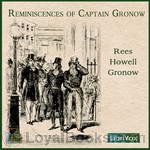 Reminiscences of Captain Gronow
Reminiscences of Captain Gronow
A collection of memoirs about the Peninsular War, the Battle of Waterloo, and society and personalities of Regency London and 19th century Paris, by a sometime Grenadier Guards officer, unsuccessful parliamentarian, and dandy. Gronow displays social attitudes of the day which would now be regarded as unacceptable, but is a clever raconteur who brings to life both the horrors of war and the gaiety of high society. | |
By: Carl E. Koppenhaver (1915-2000) | |
|---|---|
 Martin Luther
Martin Luther
This short, engaging volume summarizes the life of a priest who, intending to spark a lively academic debate by nailing 95 theses on a church door, unwittingly sets the continent aflame with the 1517 Reformation of the Catholic Church. - Summary by Elyse J. Wood | |
By: Carl Lumholtz | |
|---|---|
 Unknown Mexico
Unknown Mexico
Unknown MexicoA Record of Five Years' Exploration Among the Tribes of the Western Sierra Madre; In the Tierra Caliente of Tepic and Jalisco; and Among the Tarascos of Michoacan By Carl Lumholtz, M.A. PREFACE In the course of my travels in Australia, and especially after my arrival at Upper Herbert River in Northern Queensland, I soon perceived that it would be impracticable for me to hunt for zoological specimens without first securing the assistance of the natives of the country. Thus it came about... | |
By: Carl Parcher Russell (1894-1967) | |
|---|---|
 One Hundred Years In Yosemite: The Story Of A Great Park And Its Friends
One Hundred Years In Yosemite: The Story Of A Great Park And Its Friends
This recording of the 1931 book about Yosemite National Park comprises the narrative text about the Park from its discovery by non-natives in the Indian War of 1851 to the mid-twentieth century. The printed book contains dozens of early photographs and drawings, as well as an extensive timeline and bibliography, which are not here recorded. The author was an ecologist, historian, and administrator. He was an officer of the U.S. National Park Service for thirty four years, serving as the Chief Naturalist of Yosemite from 1923-1929 and later as Park Superintendent. - Summary by David Wales | |
By: Carlton McCarthy (1847-1936) | |
|---|---|
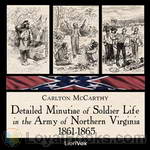 Detailed Minutiae of Soldier Life in the Army of Northern Virginia, 1861-1865
Detailed Minutiae of Soldier Life in the Army of Northern Virginia, 1861-1865
The author, who fought as a private in the Army of Northern Virginia during the Civil War, describes the Confederate soldier’s daily struggles with hunger, illness, fear, and the perils of combat; as well as his pride of service, love of comrades, and courage in the face of overwhelming odds | |
By: Caroline Dale Snedeker (1871-1956) | |
|---|---|
 Perilous Seat
Perilous Seat
Theria is a young Delphian woman who becomes an oracle. Persian wars, a doomed love affair, and a strong woman make up this well-researched novel set in Ancient Greece. - Summary by Lynne Thompson | |
By: Caroline Emelia Stephen (1834-1909) | |
|---|---|
 French History for English Children
French History for English Children
A history of France from Ancient Gaul up until 1880, written in short easy to comprehend chapters aimed at teaching English children. | |
By: Carrie Chapman Catt (1859-1947) | |
|---|---|
 Woman Suffrage and Politics
Woman Suffrage and Politics
Written after the passage of the Nineteenth Amendment and published in 1923, "This book's essential contribution must be sought in its revelation of the bearing of American politics upon the question of woman suffrage." The book traces the history of the women's suffrage movement in the United States from 1848 through 1920. The Nineteenth Amendment to the Constitution giving women the right to vole was passed by Congress on June 4, 1919 and ratified August 18, 1920. - Summary by J. M. Smallheer | |